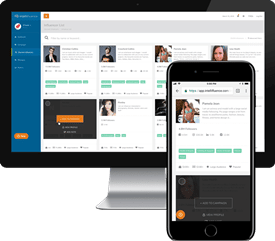Last Updated on June 8, 2020
In our previous post of this 14 article series, we discussed how to set influencer campaign goals. It is time to get more nuanced for article #4, and delve into the underlying psychology and factors surrounding who you are trying to influence when building out buyer personas as a brand. To do this, let’s explore the four factors that influence consumer behavior.
The 4 Factors Influencing Consumer Behavior
Covered in great detail by Fanny Perreau of The Consumer Factor, the four factors we’re chiefly concerned with are:
Cultural factors — geographic, language, historical, religious culture and cultural environmental
Personal factors — age, lifestyle, and personality
Psychological factors — motivation, perception, learning, beliefs and attitudes
When we briefly covered how to determine buyer personas, it was entirely based upon mining existing customer data to infer future prospective customers, so let’s spend some time trying to understand how that methodology would need to be tweaked in order to satisfy the four primary factors that influence consumer behavior.
As an example for this thought exercise, let’s use my friend Avi A. Wilensky and his ride-sharing app Up Hail. For those that haven’t used it yet, Up Hail takes the guesswork out of whether should use a service like Uber, Lyft, or any of the other dozens of services out there — it works by simultaneously querying based on your origin and destination inputs to figure out where you’ll get the most inexpensive ride. Simple, useful, on my phone.
Now, let’s say Avi has pulled together a lot of data from his current customer base and has been defining personas; how might these personas change based on the following factors?
Cultural factors for Up Hail
- Geography — I would imagine that this is going to be one of the biggest factors, culturally, that impacts the buyer persona. There’s a strong correlation between urban population centers and usage of ride sharing apps, so one tweak that could be made in addition to pulling previous customer data would be to skew towards ZIP Codes that have high populations. Thanks to the U.S. Census, this data is available for consumption and could be used to drive peer influence or even general social ad campaigns.
- Language — I have only ever used the app in English, but there are many languages spoken throughout the world, and it is exceptionally difficult to try and accommodate them all. Therefore, language becomes a good filtering tool. While it may seem harsh, you should filter out those whom you can’t readily support in order to ensure the peers on your buyer persona match as closely as possible AND are those you can impact in a positive way.
- Historical & Religious — for the most part, there is likely to be little impact, culturally from those of certain religious or societally historical backgrounds. The only exceptions I can think of are certain groups (Amish) that would be opposed to using such a service, but they are generally inaccessible online. Religion, to a degree, could be a factor for those where a female driver cannot be present, but that is a weaker filter in my opinion, and probably can be paired with geography in the future to create a new accommodating feature.

- Socioeconomic — by and large this should be the most significant factor. Who can afford a smartphone? Nowadays this is less an issue, but as recently as 5 years ago it would have been a significant filtering method. Where the factor would come into play more is in the differences between iOS and Android, where for the most part iOS users tend to be wealthier and thus have a higher degree of disposable income. This gap has since closed over the years, but still is an opportunity when targeting on a device usage level (data an app is likely to have). Who can afford to use ride sharing or taxis? This is the bigger issue, but again potentially solved by focusing on the device used to access the app. Additionally, this could filter could be paired up for those urban density areas lacking a reliable, or rather, desired mode of public transportation. When in San Francisco I personally would much rather use Up Hail than the BART, as a personal preference. In Munich or London, I don’t mind the bahn/tube as much.
- Family — we could quote the movie Inception here, because familial influence is influence within influence. While parental figures can help guide and direct purchasing decisions, the reverse is also true. My in-laws were casual Uber users until I had them install Up Hail on their phones; now they use whatever service is the cheapest. The familial tie is greater in some products than others (Coke vs Pepsi families for instance), but for Up Hail I do not think it is a significant factor.
Personal factors for Up Hail
- Age — age initially would have been a good indicator for mobile app usage, but the line has blurred considerably. So long as a person is over 18, they are a worthwhile persona to target. Granted, Generation X might be ideal due to socioeconomic reasons of having more disposable income and prolonged exposure to technology, but baby boomer usage of mobile apps has climbed significantly over the years.
- Personality — introverted/extroverted probably isn’t a major factor on app usage, though possibly those on the agoraphobic scale would have slightly higher usage metrics due to fears of mass transit and crowds.
- Lifestyle — this is the big variable within personal factors. Sedentary vs active is a key for short distance fares where some will choose to bike/walk and some will prefer to get a ride. The same goes towards lifestyle choices surrounding saving/spending; active spenders are far more likely to spend a few dollars taking an Uber than those that count every penny.

Psychological factors for Up Hail
- Motivation — this ties back into the peer influence concepts discussed in our first post and why peer influence is so important. What is the subconscious need for Up Hail? One simple measure that I can think of is the need to save money, a scarcity factor. Once peer influencers are identified, the impact of a fast query that saves money vs blindly using any one ride sharing app is ample motivation. Other motivating factors would include speed, of which executive employment might satisfy; where time is money, the app is useful.
- Perception — this is difficult to access via customer data; what would be required is some sort of survey to get a better understanding as to how an initial advertisement or recommendation was perceived. One possible way to use this on developing out buyer personas though would be to determine if multiple viewings of an ad were required in order to convert . In other words, if targeting pixels are used and it appears as though a consumer needed 3+ exposures to Up Hail before converting to an app download, then the consumer might be slightly ad blind to the brand. This is less of a persona filter than an overall brand image tweak, though.
- Learning — usage of the app at higher levels would imply learnings and acceptance. This could be used when filtering on buyer personas by sub-segmenting the group for those that appear to be the most likely to turn into brand evangelists, of which can be used later on content marketing purposes.
- Beliefs and attitudes — this data might be culled by tying app reviews to app usage; when positive experiences are noted, look for similarities among the positive reviewers to determine if any subsections of buyer personas exist. The beliefs that are the most helpful are those where the app is viewed as necessary and important, and they are going to also be the mostly likely to also positively review in other platforms for free or for some compensation related to their next ride (using a service like Intellifluence of course).
How to Use These Buyer Personas in Intellifluence
Between the initial article on data gathering for buyer personas, and this piece on how to dissect them on various consumer factors, let’s assume that you have some incredible buyer personas. The next step is to pitch influencers that best match the peers of those buyer personas and attempt to maximize your social sales. If you aren’t using Intellifluence yet, you can register for a free trial and get started within minutes. In all likelihood from building out the personas, you have a keen understanding of which channels are going to be the most appropriate for your audience. If not, we’ll discuss that deeper on our next piece in our series on influencer marketing.

Joe, CEO and Co-Founder of Intellifluence, has over 25 years of experience in SEO, leading several successful marketing companies and providing expert consultation. He is the author of The Ultimate Guide to Using Influencer Marketing, which is available as an eBook or in print.






